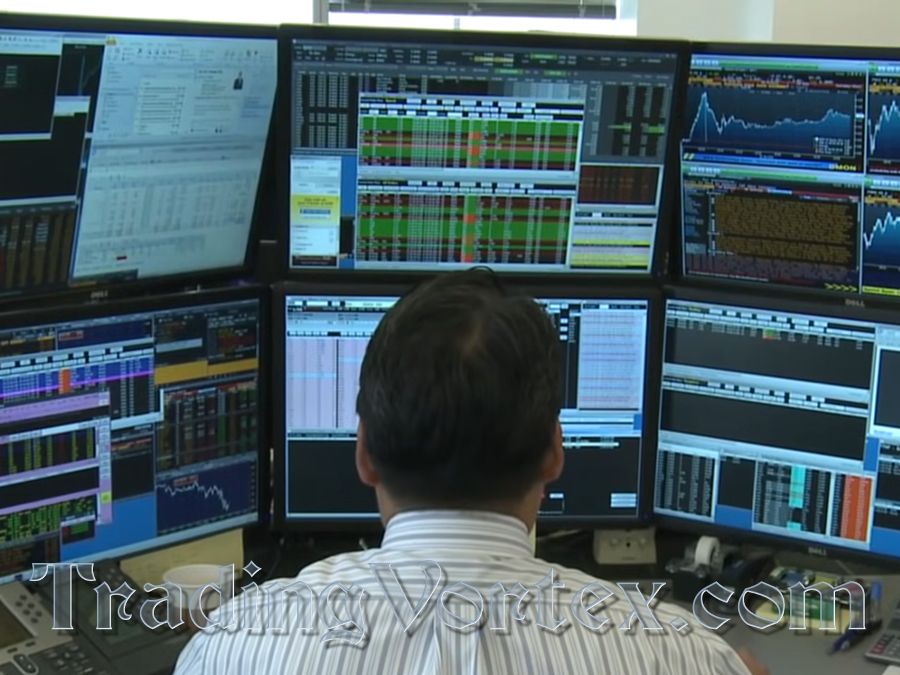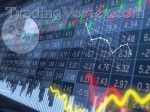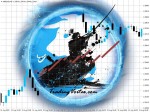Table Of Contents:
- Introduction to Agricultural Commodities Trading:
Basics of Agricultural Commodities Trading:
Agricultural Commodities Trading Strategies:
Factors Influencing Agricultural Commodities Trading:
Risks and Challenges in Agricultural Commodities Trading:
Case Studies and Practical Examples in Agricultural Commodities Trading:
Emerging Trends and Innovations in Agricultural Commodities Trading:
Nurturing Growth and Managing Risks: Your Path in Agricultural Commodities Trading.
Introduction to Agricultural Commodities Trading:
Understanding Agricultural Commodities Trading:
One of the distinctive features of agricultural commodities trading is the seasonal and cyclical nature of these assets. Factors like weather conditions, supply and demand dynamics, and government policies significantly influence commodity prices. Understanding the unique characteristics of this market is fundamental for anyone looking to venture into agricultural commodities trading.
Significance of Agricultural Commodities Trading:
Agricultural commodities trading plays a crucial role in global food and resource distribution. It enables farmers to manage their price risk, ensuring a stable income even in the face of unpredictable market conditions. Additionally, it provides a means for consumers and businesses to secure future supplies at known prices, reducing uncertainty in food and resource procurement.
From an investment perspective, agricultural commodities offer diversification opportunities. They often exhibit a low correlation with traditional financial assets like stocks and bonds, making them a valuable addition to an investment portfolio. Furthermore, agricultural commodities trading is not solely limited to farmers and food-related businesses; it is accessible to a wide range of participants, including institutional investors, speculators, and retail traders.
As we delve deeper into this article, we will explore the basics of agricultural commodities trading and the strategies employed by market participants to navigate this unique and influential segment of the financial world.
Basics of Agricultural Commodities Trading:
What Are Agricultural Commodities?
Within the agricultural commodities market, each commodity has its unique characteristics and factors influencing its price. Understanding the distinctions between these commodities is essential for effective trading strategies.
Historical Perspective on Agricultural Commodities Trading:
Agricultural commodities trading has deep historical roots, dating back to ancient civilizations where agricultural products were exchanged in barter systems. Over time, these markets evolved to become more structured, with the establishment of early commodity exchanges.
The Chicago Board of Trade (CBOT), founded in 1848, played a pivotal role in the development of agricultural commodities trading. It introduced standardized contracts for agricultural products, offering a way to manage price risk for farmers. These standardized contracts set the stage for the modern futures markets, providing a platform for hedging against price fluctuations and speculating on future price movements.
Key Players in Agricultural Commodities Trading:
Several key players participate in the agricultural commodities trading ecosystem. These include:
- Farmers: Producers of agricultural commodities who engage in trading to hedge against price volatility.
- Commodity Traders: Individuals, companies, and institutions that buy and sell agricultural commodities for profit, either as speculators or as a part of their trading strategies.
- Commodity Brokers: Intermediaries who facilitate commodity trading transactions on behalf of their clients.
- Hedgers: Those who use agricultural commodities contracts to protect themselves against adverse price movements.
- Investors: Including institutional investors, retail investors, and funds that allocate capital to the agricultural commodities market for portfolio diversification and potential returns.
Agricultural Commodities Exchanges:
Agricultural commodities trading primarily takes place on commodity exchanges, which provide a structured platform for buying and selling these goods. Notable agricultural commodities exchanges include the Chicago Mercantile Exchange (CME Group), Intercontinental Exchange (ICE), and Euronext. These exchanges facilitate trading by establishing standardized contracts with specific terms, such as the quantity, quality, and delivery requirements of the commodity.
Exchange-traded futures and options contracts are the primary instruments used in agricultural commodities trading. These contracts allow market participants to speculate on future price movements or hedge their positions against price fluctuations. The presence of these exchanges ensures transparency and liquidity in the market, making it accessible to a diverse array of participants.
As we continue to explore agricultural commodities trading in this article, we will delve further into the strategies and techniques employed by participants in this dynamic and influential market.
Agricultural Commodities Trading Strategies:
Fundamental Analysis in Agricultural Commodities Trading:
Fundamental analysis is a cornerstone of agricultural commodities trading. It involves evaluating the intrinsic value of a commodity by examining various factors that influence its supply and demand dynamics. Key elements of fundamental analysis in agricultural commodities trading include:
- Supply and Demand Dynamics: Analyzing production forecasts, weather conditions, and market trends to assess the balance between supply and demand for a specific commodity.
- Government Policies: Evaluating the impact of government policies, subsidies, and trade restrictions on agricultural commodities.
- Economic Indicators: Monitoring economic data such as GDP growth, inflation rates, and currency fluctuations that can affect agricultural commodity prices.
- Global Trade: Considering international trade agreements, tariffs, and geopolitical events that can impact the flow of agricultural commodities across borders.
Technical Analysis for Agricultural Commodities:
Technical analysis is another essential component of agricultural commodities trading. It involves studying price charts, historical data, and market indicators to make trading decisions. Some key elements of technical analysis in agricultural commodities trading include:
- Candlestick Patterns: Analyzing candlestick patterns to identify potential price reversals and trends.
- Moving Averages: Using moving averages to smooth out price data and identify trends.
- Support and Resistance Levels: Identifying price levels where commodities are likely to encounter buying or selling pressure.
- Volume Analysis: Evaluating trading volumes to confirm price movements and trends.
Risk Management in Agricultural Commodities Trading:
Risk management is integral to agricultural commodities trading due to the inherent price volatility in this market. Effective risk management strategies include:
- Stop-Loss Orders: Setting predefined price levels at which you will exit a trade to limit potential losses.
- Diversification: Spreading investments across different agricultural commodities to reduce risk exposure.
- Position Sizing: Determining the appropriate size of each trade relative to your overall portfolio to control risk.
- Hedging: Using futures or options contracts to offset potential losses in the physical commodity.
Seasonal Trends and Agricultural Commodities:
Seasonal trends play a significant role in agricultural commodities trading. Understanding the timing of planting, harvesting, and other seasonal factors is crucial for making informed trading decisions. For example, "the demand for certain commodities like corn and soybeans may increase during planting season, affecting prices".
Trading Options and Futures in Agricultural Commodities:
Options and futures contracts are widely used in agricultural commodities trading. These derivative instruments offer flexibility and risk management opportunities. Traders can speculate on price movements or use these contracts to hedge against unfavorable price fluctuations. Understanding the mechanics of options and futures is essential for mastering agricultural commodities trading.
As we explore these strategies in detail, you'll gain insights into how to navigate the agricultural commodities market, make informed decisions, and manage risk effectively. Each strategy has its unique benefits and considerations, making it essential to tailor your approach to your specific trading goals and risk tolerance.
Factors Influencing Agricultural Commodities Trading:
Weather and Climate Impact on Agricultural Commodities:
Weather and climate conditions have a profound influence on agricultural commodities trading. Changes in temperature, precipitation, and extreme weather events can significantly impact crop yields and quality. Key points to consider include:
- Droughts and Floods: Prolonged droughts can lead to water shortages and crop failures, affecting the supply of agricultural commodities. Conversely, excessive rainfall and flooding can damage crops and disrupt transportation.
- Temperature Extremes: Extreme temperatures, either too hot or too cold, can harm crops, impacting their growth and eventual harvest.
- Climate Change: The long-term effects of climate change, including shifts in growing seasons and altered weather patterns, present challenges and opportunities for agricultural commodities traders.
Government Policies and Regulations:
Government policies and regulations play a crucial role in agricultural commodities trading. They can affect the production, distribution, and pricing of commodities in several ways:
- Subsidies and Support: Government subsidies can influence the profitability of agriculture, impacting both supply and demand.
- Trade Tariffs: Trade policies, including tariffs and trade agreements, can influence the flow of agricultural commodities across international borders.
- Environmental Regulations: Regulations related to land use, water quality, and pesticide use can impact agricultural practices and the availability of commodities.
- Biofuel Mandates: Policies promoting biofuels can influence the demand for crops like corn and soybeans.
Global Economic Factors and Agricultural Commodities:
The global economic landscape has a direct impact on agricultural commodities trading. Economic factors to consider include:
- Economic Growth: Strong economic growth can increase the demand for agricultural commodities as consumers have more purchasing power to buy food and other products.
- Inflation and Currency Exchange Rates: Changes in inflation rates and currency values can affect the real cost of agricultural commodities.
- Trade and Geopolitical Tensions: Trade disputes and geopolitical events can disrupt global supply chains and affect the flow of agricultural commodities.
Supply and Demand Dynamics:
Supply and demand dynamics are fundamental to agricultural commodities trading. Several factors influence the balance between supply and demand:
- Crop Yields: The quantity and quality of crops produced in a given season are critical factors. Factors such as pest infestations and diseases can impact yields.
- Changing Diets: Shifting consumer preferences and diets influence the demand for different commodities, such as the growing demand for protein-rich diets that impact livestock markets.
- Emerging Markets: The economic development of emerging markets can increase demand for agricultural commodities.
- Technological Advancements: Innovations in agriculture, such as new farming techniques and genetically modified crops, can impact supply and efficiency.
Understanding these factors is essential for successful agricultural commodities trading. Traders need to stay informed about changing conditions and be able to adapt their strategies to capitalize on opportunities and mitigate risks in this dynamic market.
Risks and Challenges in Agricultural Commodities Trading:
Price Volatility and Market Uncertainty:
Price volatility is a defining characteristic of agricultural commodities trading. The agricultural sector is inherently susceptible to various factors that can lead to rapid and substantial price fluctuations. Some key considerations in this regard include:
- Weather Events: Unpredictable weather patterns, including droughts, floods, and storms, can damage crops and lead to supply shortages or surpluses, directly affecting prices.
- Crop Diseases and Pest Infestations: Outbreaks of diseases or pest infestations can devastate crops, leading to reduced supply and increased prices.
- Global Trade and Tariffs: Trade tensions and tariffs can disrupt international trade flows, impacting the supply and demand balance and causing market uncertainty.
- Speculative Activity: Speculative trading can amplify price swings in the agricultural commodities market, leading to increased volatility.
Geopolitical Factors Affecting Agricultural Commodities:
Geopolitical events and considerations have a significant impact on agricultural commodities trading. Some crucial geopolitical factors include:
- Trade Policies and Tariffs: Changes in trade agreements, tariffs, and trade disputes can affect the movement of agricultural commodities across international borders.
- Export and Import Restrictions: Governments may impose export or import restrictions on certain commodities, affecting their availability in the global market.
- Political Stability: Political instability in major agricultural producing regions can disrupt supply chains and lead to market uncertainties.
- Currency Fluctuations: Exchange rate movements can influence the international competitiveness of agricultural exports and impact prices.
Environmental and Sustainability Concerns:
Environmental and sustainability concerns are becoming increasingly important in agricultural commodities trading. Traders and investors must consider:
- Climate Change: The long-term effects of climate change, including shifts in weather patterns and the potential for extreme events, can impact crop yields and prices.
- Sustainable Practices: Growing demand for sustainably produced agricultural commodities can affect market dynamics, as consumers and businesses seek products with environmentally friendly and ethical sourcing.
- Regulatory Changes: Evolving environmental regulations can impact agricultural practices and production costs, affecting commodity prices.
- Food Safety and Quality: Concerns related to food safety and quality can influence consumer preferences and impact certain commodities.
As a participant in agricultural commodities trading, understanding and effectively managing these risks and challenges is essential for long-term success. Traders and investors need to be adaptable, stay informed about global developments, and employ risk management strategies to mitigate potential adverse effects on their positions and portfolios.
Case Studies and Practical Examples in Agricultural Commodities Trading:
Real-Life Success Stories in Agricultural Commodities Trading:
Real-life success stories in agricultural commodities trading provide valuable insights into the strategies and practices that have yielded significant returns and achievements. Here are a few noteworthy examples:
- George Soros' Wheat Trade: The famous hedge fund manager George Soros made substantial profits by correctly predicting a shortage of wheat due to adverse weather conditions. His success in wheat trading serves as a testament to the importance of staying informed about weather-related factors.
- Louis Dreyfus and the Soybean Trade: The Louis Dreyfus Company, a major agricultural commodities trader, has a long history of successful trades. They have capitalized on opportunities in soybeans, showing how knowledge of global supply and demand dynamics can lead to profitable trades.
- Jim Rogers' Agri-Fund: Jim Rogers, a well-known investor and author, established an agricultural commodities-focused fund. His investment in agricultural commodities, including cotton and sugar, has demonstrated the potential for diversification and profitability in the sector.
Learning from Past Mistakes: Agricultural Commodities Trading Failures.
Learning from past mistakes is equally crucial in agricultural commodities trading. Examining instances of failure can help traders and investors avoid common pitfalls. Some historical failures include:
- The 2008 Food Crisis: In 2008, global food prices spiked, leading to food riots in several countries. Traders and investors who did not anticipate these price movements suffered significant losses. This crisis highlights the importance of considering factors like global food security and political instability.
- The Coffee Market Crash of 2018: A surplus of coffee beans in 2018 caused a sharp decline in coffee prices. Traders who did not manage their risk appropriately experienced substantial losses, emphasizing the need for effective risk management strategies.
- Cocoa Supply Chain Disruptions: Supply chain disruptions, such as those caused by political instability in cocoa-producing regions, have resulted in price volatility. Investors who did not account for these geopolitical risks incurred losses.
Case studies, both of success and failure, offer valuable lessons for those involved in agricultural commodities trading. They underscore the importance of thorough research, risk management, and the ability to adapt to changing market conditions. By studying the experiences of others, traders and investors can enhance their understanding of the agricultural commodities market and make more informed decisions.
Emerging Trends and Innovations in Agricultural Commodities Trading:
Technology Advancements in Agricultural Commodities Trading:
Technological advancements are transforming the landscape of agricultural commodities trading. Some key innovations include:
- Electronic Trading Platforms: The shift from open outcry trading to electronic platforms has improved efficiency and accessibility in agricultural commodities trading. Traders can execute orders and monitor markets in real-time from anywhere in the world.
- Blockchain and Traceability: Blockchain technology is being used to enhance transparency and traceability in supply chains. This can be crucial for ensuring the authenticity and quality of agricultural commodities.
- Mobile Apps and Trading Software: Mobile applications and trading software have become integral tools for traders, providing them with the ability to monitor prices, execute trades, and access market data on the go.
- High-Frequency Trading (HFT): HFT algorithms are increasingly prevalent in agricultural commodities trading, allowing for rapid execution of orders based on complex algorithms and data analysis.
Sustainable and Ethical Trading Practices:
Sustainability and ethical considerations are gaining prominence in agricultural commodities trading. Some noteworthy trends include:
- Certification and Labeling: Certification programs such as Fair Trade and organic certifications have gained popularity, signaling a commitment to ethical and sustainable practices.
- Climate-Resilient Agriculture: A growing emphasis on climate-resilient agriculture practices to adapt to changing weather patterns and minimize environmental impact.
- Impact Investing: The emergence of impact investing in agriculture, where investors seek to generate positive social and environmental outcomes alongside financial returns.
- Environmental, Social, and Governance (ESG) Criteria: ESG criteria are increasingly used by investors to evaluate the sustainability and ethical practices of companies involved in agricultural commodities.
The Role of Big Data and AI in Agricultural Commodities Trading:
Big Data and artificial intelligence (AI) are revolutionizing agricultural commodities trading. Key developments in this area include:
- Predictive Analytics: AI-driven predictive analytics can forecast supply and demand trends, helping traders make more informed decisions.
- Market Sentiment Analysis: Sentiment analysis using AI algorithms can gauge market sentiment and predict price movements based on news and social media data.
- Machine Learning Algorithms: Machine learning is being used to develop trading algorithms that adapt and learn from market data, potentially improving trading strategies.
- Supply Chain Optimization: AI and Big Data analytics are used to optimize supply chains, improving the efficiency of transporting and storing agricultural commodities.
These emerging trends and innovations are shaping the future of agricultural commodities trading, offering new opportunities and challenges for traders, investors, and the industry as a whole. Staying informed and adapting to these changes can be critical for success in this dynamic market.
Nurturing Growth and Managing Risks: Your Path in Agricultural Commodities Trading.
Summing Up Agricultural Commodities Trading Essentials:
In the realm of agricultural commodities trading, we have navigated through the essential elements that form the backbone of this dynamic market. From understanding the basics of what agricultural commodities are and the historical evolution of trading to exploring the strategies employed by traders, we've delved into the complexities and intricacies of this financial sector.
Agricultural commodities trading isn't just a matter of buying and selling; it's a world deeply interconnected with global events and markets. Factors such as weather conditions, government policies, economic shifts, and supply and demand dynamics play crucial roles in influencing commodity prices.
Alongside these influences, we've discussed the inherent risks and challenges that traders face. Price volatility, geopolitical factors, and sustainability concerns are just some of the aspects that necessitate a comprehensive understanding and robust risk management strategy.
We've also highlighted real-life success stories and lessons learned from past failures, emphasizing the importance of continuous learning and adaptation in this ever-evolving field. The history of agricultural commodities trading is filled with both inspiring accomplishments and cautionary tales, from which valuable insights can be drawn.
Planning Your Agricultural Commodities Trading Journey:
As you embark on your own agricultural commodities trading journey, it's essential to recognize that success in this market is not guaranteed. It requires dedication, diligence, and a continuous pursuit of knowledge. The following steps can help you plan your path forward:
- Education: Invest time in learning about agricultural commodities, trading strategies, and market dynamics. Stay updated with the latest developments.
- Risk Management: Develop a comprehensive risk management strategy to protect your investments and limit potential losses.
- Diversification: Consider diversifying your portfolio to reduce risk. Different commodities and trading strategies can provide stability.
- Stay Informed: Be aware of the ever-changing factors influencing the market. Weather patterns, government policies, and global events all require your attention.
- Adaptability: Be flexible and ready to adapt your strategies to changing market conditions.
In the world of agricultural commodities trading, opportunities are abundant, but so are the challenges. By equipping yourself with knowledge, embracing innovation, and remaining mindful of the past, you can navigate the complexities of this market and make informed decisions to achieve your trading goals.







































